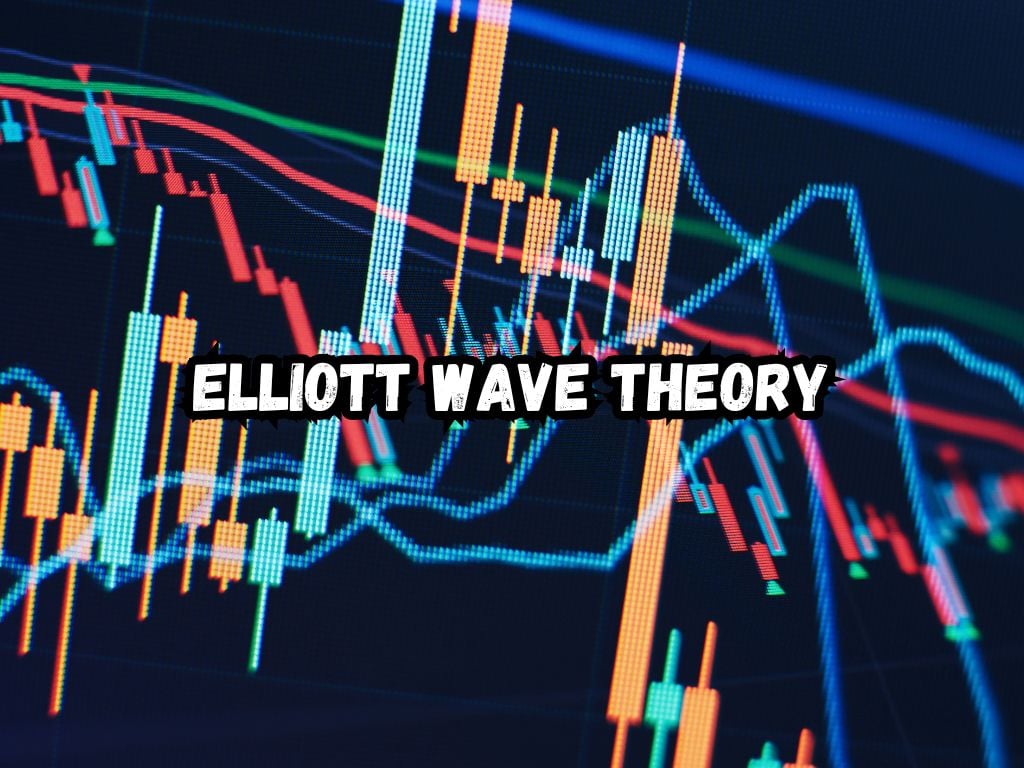Elliott Wave Theory (EWT) stands out as a unique and compelling aspect of technical analysis in the world of trading and financial markets.
Devised by Ralph Nelson Elliott in the 1930s, this theory has shaped the way investors and traders analyze market trends and make decisions.
At its core, EWT suggests that market prices unfold in specific, predictable patterns, known as waves.
Understanding Elliott Wave Theory is not just about recognizing these patterns; it’s about unlocking a deeper insight into market psychology and investor behavior.
Elliott Wave Theory
Elliott Wave Theory is built around two fundamental wave types: impulse waves and corrective waves. Impulse waves move in the direction of the overall trend and are structured in a five-wave pattern.
This pattern consists of three waves in the direction of the trend, numbered 1, 3, and 5, interspersed with two waves against the trend, numbered 2 and 4. These waves reflect the primary movements that push the market.
Corrective waves, on the other hand, move against the trend and typically unfold in a three-wave pattern labeled A, B, and C. These waves correct the market, offering a pause and a retracement of the prices set by the impulse waves.
Each of these wave types embodies the natural rhythm of market sentiment, swinging between optimism and pessimism, euphoria and despair.

Impulse Waves and Corrective Waves
Impulse waves propel the market forward. Their structure is governed by a set of rules that maintain the integrity of the wave pattern.
For instance, wave 2 never retraces more than 100% of wave 1, wave 3 cannot be the shortest wave among waves 1, 3, and 5, and wave 4 does not overlap with the price territory of wave 1.
Corrective waves serve to correct the preceding impulse wave. The variety in corrective wave patterns, including zigzag, flat, and triangle formations, adds complexity to EWT analysis but also enriches the theory’s adaptability to different market scenarios.
The Fibonacci Connection
A crucial aspect of EWT is its connection with Fibonacci numbers. Elliott discovered that Fibonacci ratios describe the proportions between the waves accurately.
For instance, retracement levels in a correction often align with key Fibonacci percentages like 38.2%, 50%, and 61.8%.
This relationship suggests an inherent order and proportion within market trends, guided by the principles of natural growth and decay.
Practical Application of Elliott Wave Theory
Applying EWT in real-world trading involves identifying wave patterns in price charts and using them to predict future market movements. This process requires practitioners to become adept at wave counting, distinguishing between types of waves, and applying Fibonacci ratios to gauge retracement and projection levels.
Recognizing the wave pattern underway can signal traders about potential market entry and exit points, aiding in decision-making.
Elliott Wave Trading Strategies
Successful traders use Elliott Wave Theory to enhance their understanding of market trends and to refine their trading strategies. By pinpointing where the price is within the wave sequence, traders can make more informed predictions about future price movements.
However, it’s crucial to combine EWT with sound risk management practices and to corroborate findings using other forms of technical analysis.
Advanced Concepts
Elliott Wave Theory is deepened by understanding concepts such as wave degrees, which describe the scale of the waves, and the notion of complexity in wave patterns. Wave degrees range from grand supercycles lasting centuries to sub-minuette waves that could be over in minutes. Recognizing the degree of the wave offers a more nuanced view of market dynamics.
The theory also emphasizes the psychological aspect of market movements. Waves reflect the collective sentiment of investors, swinging from optimistic to pessimistic, driven by human emotions rather than rational calculation.
Criticism and Limitations
Despite its utility, Elliott Wave Theory has faced criticism, mainly due to its subjective nature. Critics argue that wave counting is open to interpretation, which can lead to varied predictions.
Moreover, the complexity of applying the theory, especially in identifying wave degrees and patterns in real time, can be daunting for beginners.

Pro Tips
Mastering Elliott Wave Theory requires practice and patience. Start with the basics, progressively move to more complex concepts, and continually verify your analysis against actual market movements.
Leveraging software designed for EWT can also help in identifying wave patterns more accurately.
Frequently Asked Questions
How accurate is Elliott Wave Theory in predicting market movements?
While EWT can be remarkably insightful, its accuracy depends on the skill and experience of the analyst.
Can Elliott Wave Theory be applied to all markets and time frames?
Yes, EWT is versatile and can be applied across different markets and time frames, reflecting its universal appeal.
How does one differentiate between impulse and corrective waves in real time?
This distinction is based on the wave structure and sequence: impulse waves follow a five-wave pattern, whereas corrective waves typically unfold in a three-wave pattern.
What are the most common challenges beginners face when learning Elliott Wave Theory?
The main challenges include the subjective nature of wave counting and the complexity of applying the theory in real-time analysis.
How does Elliott Wave Theory complement other forms of technical analysis?
EWT can be combined with other technical analysis tools, like trend lines and indicators, to confirm trading signals and enhance decision-making.
Elliott Wave Theory, with its intricate connection to natural patterns and market psychology, offers a rich basis for navigating the financial markets.
Its holistic approach to understanding price movements provides a unique lens through which traders and investors can enhance their market analysis and strategic planning.
Conclusion
Elliott Wave Theory offers a dynamic framework for understanding market trends, rooted in the natural patterns of human behavior and market sentiment.
While it may not provide all the answers, its depth and flexibility make it a valuable tool in the arsenal of any trader devoted to mastering technical analysis.


 Tags:
Tags:










